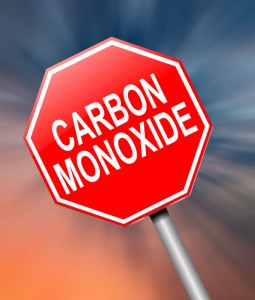Fall weather has started to roll in. The chilly winds whip colorful leaves off the trees and have sent us searching for our warmer clothes. With the cooler weather comes the need to start thinking about how to heat your home. A lot of people along the coast turn to their fireplace for at least a portion of their home heating, meaning fireplaces are starting to get used again. While your fireplace seems basically indestructible, it does need some regular attention. A chimney sweep and inspection every year is crucial to keeping your home safe. If you neglect to care for your fireplace and chimney, you are putting your health and safety at risk. One of the more sinister dangers of a fireplace is disrepair is carbon monoxide.
What Is Carbon Monoxide?
Carbon monoxide is a tiny molecule produced whenever combustion occurs. Therefore, you can find carbon monoxide is everything from car exhaust to stoves, lanterns to wood and charcoal burning appliances, and even gas ranges. Carbon monoxide builds up quickly in the air when combustion happens in an enclosed space, such as in a home fireplace. If the concentration of the gas grows too high, you run the risk of suffering from carbon monoxide poisoning. Unfortunately, you cannot even tell if the gas is present because it has no smell, taste or appearance. A special detector is the only way to determine if the gas is present.
Depending on the size of the room and how quickly it fills with carbon monoxide, poisoning by the gas may take only minutes. Once you inhale the gas, it enters your blood stream and latches onto your red blood cells. This gives oxygen no way to travel around your body, which results first in severe tissue damage and eventually death if the oxygen levels are not restored. You can tell if someone is suffering from carbon monoxide poisoning if he or she exhibits symptoms such as headache, dizziness, nausea and confusion. Unconsciousness will eventually occur after these symptoms, so moving the person into an open area is vital to his or her survival.
What Does This Have To Do With My Fireplace?
Unless your fireplace is electric, it burns some type of fuel like wood, charcoal, pellets or gas. This burning produces carbon monoxide. If properly installed, a fireplace and chimney should allow the carbon monoxide to escape the home. Regrettably, many issues can hinder this venting process.
An obstruction in the chimney can increase the risk of poisoning by carbon monoxide. An animal, a nest, or even a dirty chimney can cause an obstruction. If one of these things blocks the gases from flowing out of the chimney, the gases backtrack right into the house. A simple fix for obstructions involves having a mason install a chimney cap to keep animals out and having your chimney swept at least once per year.
If you live in the area of Elkton, Maryland, contact Ace Chimney Sweeps for a professional consultation. Ace Chimney Sweeps can help keep your home safe from carbon monoxide.

